Lor Sabourin | Finding Joy in Improbable Goals
A note from Kris:
I know I’ve mentioned this on the podcast, so I suppose I can come clean here. I cry watching sports documentaries. Anytime the human spirit triumphs over a major obstacle—whether that be internal or external—I can’t help but cry happy tears. I find myself pulling from those moments when faced with my own obstacles. What would Lane Frost do right now? Would Wilma Rudolph make this excuse?
Maybe more than anything, I admire the constant journey of finding one’s better self. Physically, emotionally, mentally. I admire the belief and steadfastness it takes to continue that journey when it’s so easy to feel that a ceiling has been reached.
I’m sure it’s not long before I find myself banging my head against a seemingly insurmountable project and think, “What would Lor do? Would they walk away from this?”
And I’ll try again, with more intention.
Finding Joy in Improbable Goals
written by Lor Sabourin
Photo by Blake McCord of McCord Media.
I know the power of inspiring goals.
As a mental training coach for The Warrior’s Way, I work with athletes to develop a healthier relationship to fear, stress, and achievement. Practicing drills and exercises are an important part of the learning process; they help organize theoretical concepts into lived experience. Without an inspiring goal to direct their practice, though, athletes often stall out or lose focus quickly. I encourage athletes to pick an inspiring goal that will motivate them to show up well for life’s challenges.
Following this advice was how I found myself at the base of my largest-scale rock climbing project to date.
“The Cousin of Death,” a 600-foot 5.13+ in a remote corner of northern Arizona, had captured my attention years before when it was first established by Blake McCord and Joel Unema, my close friends and climbing mentors. I was captivated by their stories of the glassy, technical stemming pitch, splitter roof crack, and heartbreaking power endurance crux at the top.
The Cousin of Death felt like an improbable goal for the season. Each of the crux pitches was above my hardest redpoint grade, so sending them in isolation would be a challenge in itself. On top of that, the climbing was thin and insecure. Linking every pitch together in a single day would require precise execution, luck, or a combination of the two.
I knew that projecting the Cousin of Death would require serious commitment to my personal climbing. As a coach, route setter, and guide, I spend a lot of time facilitating the climbing of others. I can feel a difference in the way that I teach when I’ve been investing in my own learning and when I’ve been neglecting it for too long. Mental training, in particular, is a subject that requires consistent practice and self-exploration to teach effectively. When I’m not pushing myself to learn, my coaching feels hollowed out and hyper-intellectual. When I spend time applying what I teach to my own life, lessons feel authentic and embodied. I owe it to myself and my students to stay honest about applying myself to my own goals.
Photo by Blake McCord of McCord Media.
Last month, I was asked to give a presentation on “5 Ways to Lower Barriers to Joy in Climbing”: grounding yourself in body awareness, practicing defenselessness, leaning into fear in small steps, becoming your body’s ally, and celebrating learning. I felt that this subject pointed to the soul of mental training. Becoming mentally fit, after all, is a journey of becoming more engaged with what we love.
These lessons came to life for me on The Cousin of Death. Here’s how:
1. Ground Yourself in Body Awareness
I worked the fourth pitch first. Since the route is accessed from above, this was the closest crux pitch to get to and seemed to be the one that would take the most work. This pitch, in itself, would be my hardest on gear to date. After a few days of top-rope rehearsal - working through the foot beta for desperate lurches and the hand positions for insecure finger locks - I decided to pull the rope and go for my first redpoint burn. I reminded myself that the goal was to fight hard and learn, but my body was still shaking with anticipation.
As I launched into the first sequence, I felt rigid and anxious. I wanted every move to feel perfect, but as a result, I felt removed from my body. I was thinking through the beta rather than paying attention to what I was doing. After a disheartening take/fall (the kind where you know that you only half-committed to the move because your forearms were screaming), I sat on the rope and paused to take inventory.
One of the most challenging aspects of mental training is learning to get our attention out of thinking and into our body. When we feel nervous or put pressure on ourselves to perform well, we can get distracted by thoughts about how to climb and avoid failure. We might botch an initial sequence and think “Well, now I know that I won’t send,” or float through a challenging move and panic that we will mess up above it. The magic of feeling connected - to our body and the rock - goes away.
I realized, hanging there, that I had been a “floating head” trying to think my way up the climb. I wasn’t breathing, looking at the holds, or relaxing into the best positions. I definitely wasn’t moving continuously. I decided to shift approaches. When I’m coaching body awareness, I teach athletes to focus on specific points of attention: internally on the sensations of expanded posture, relaxation, and breathing, and externally on what they can feel, hear, and see. This process, which we call “Expanded Body and Observant Mind,” focuses attention on what is happening in the moment. I refreshed my beta one more time for the challenging moves and then switched my attention to a simple mantra: keep breathing, keep moving, relax, maintain eye contact. Grounding myself in body awareness made the climbing feel fun again.
I didn’t send that day, but I made some memorable links and flew off the wall in full-commitment mode every go. I smiled and laughed after every fall - excited to go back up and experience more. I had given myself permission to trust my body - one of the most important access points to joy.
Photo by Blake McCord of McCord Media.
2. Practice Defenselessness
When we feel threatened, our body responds in a predictable, protective way. Whether we are responding to a true survival threat or a more subtle threat to our sense of well-being, our body will take charge by increasing our heart rate and breathing, tensing our muscles, and narrowing our vision. If we don’t find a way to get away from the threat quickly, we start to feel panicked and might lash out or shut down for reasons that we don’t understand.
That’s where I found myself on my fourth day on the roof pitch.
The roof pitch also came with an intimidating backstory. Due to a colony of bats that resided in the crack above, the inside of the roof was covered in a layer of slime that caused cams to shoot out of the crack when weighted. One bolt had been placed to prevent a catastrophic fall, but getting to the bolt and exiting the roof still required committing smears on bat-slime covered rock. After my fourth foot slip of the day, I felt the familiar feeling of defensiveness creep up. I wanted things to feel easier. I wanted the feet to feel sticky. I wanted more bolts. I wanted stronger biceps.
Frustration, a clear sign that we’ve become defensive, occurs when our expectations don’t line up with the reality of the situation. We tend to fixate on the injustice of bad conditions, poor shoe rubber, or weak fingers because that feels less stressful than what we are experiencing.
There are two questions that we can ask to shift out of frustration and into curiosity:
What did I do well? What can I improve?
These questions nudge us back towards focusing on the things that we can control, working with reality, and remaining curious. When I ask myself what I did well, I focus on things that I can bring with me to my next attempt and prevent all-or-nothing thinking. When I ask myself what I can improve, I make an action plan for what I will do differently. I’m not going to get stronger biceps before pulling back onto the route, but I can experiment with more efficient beta and look at my feet when I place them.
Staying curious gave me space to be playful on the pitch. I was able to let go of the defensive belief that “I should’ve sent this already,” and make mistakes until I learned what to do in that spot. I gave myself space to be creative again.
3. Lean into Fear— in Small Steps
When I teach falling clinics with The Warrior’s Way, I start by asking participants what they would like to get out of the clinic. A common response is “I want to get over my fear of falling. I don’t want to be afraid anymore.” This all-or-nothing approach to fear can make mental training and fear management feel inaccessible.
When I address these students, I reflect on my own experiences with falling. As a kid, I was terrified to fall on lead, even below the bolt. My friends would do anything to get me to practice falling: starting with encouragement and taking more extreme measures like loosening holds on the warm-up. Like clockwork, I would arrive at the “falling spot,” pull my body as close to the wall as possible, and cry for about 30 minutes before down-climbing to the ground and leaving for the day. I felt unteachable and ashamed of myself for not being as ‘tough’ as all the other climbers.
From an outside perspective, I am a very different climber now. I spend a lot of time projecting and taking big falls on tiny pieces of protection. In the eyes of my students, I have “crossed over.” I wish that I could just tell people the secret to forgetting about fear, but the truth for me has always been that engaging fear, like anything worth doing, is an ongoing, labor-intensive process.
The stem box on the first pitch of the Cousin of Death required moves that I had never imagined falling out of before— things like throwing behind my back to a sloping, half-pad gaston and then throwing my foot up to my shoulder before pressing myself back up to standing. The pitch was protected well, but I knew that I still felt insecure while committing to these positions.
I decided to set myself up for success. I recruited my friend Matt, an encouraging partner and attentive belayer, to come out for my first lead attempts. I knew that Matt’s calm, engaged energy would be amazing to have for what I planned to do.
My goal on my first attempt was not to send; in fact, it was exactly the opposite. I wanted to fall above every bolt. I wanted to learn, through experience, how to fall well in those spots. I knew that this was the only way that I would be able to focus on the delicate climbing on future attempts.
As I went up, taking progressively longer and more committed falls, I felt empowered. Looking up at the pitch, I had felt unsure about how the falls would feel. Now, engaged in the process of taking them, my face lit up and I became excited to go back up for a redpoint.
Fear can be a powerful reminder to pay attention when something is challenging. The magic doesn’t come from getting to the end, though. The magic comes from leaning into fear with small steps that shift the climbing day from hopeless to joyful.
Photo by Blake McCord of McCord Media.
4. Be Your Body’s Ally
Like any training nerd, I have a tendency to design training plans that involve every new idea that has come out in the past year. I want to do ALL of the hangboard routines, ALL of the fancy lifts, ALL of the drills, and definitely ALL of the climbing. This, coupled with a desire to see how far my body can go and a stress-management plan that involves constant movement, can be a recipe for disaster.
When I chose the Cousin of Death as a fall project, I knew that I was going to need to reboot my relationship with my body and training. I didn’t want to experiment anymore. I wanted to get stronger.
I decided to train on a Proven Plan from the Power Company because I knew that it would hold me accountable for what I did during sessions and prevent overtraining. I was blown away by the experience. The simplicity of the programming made the plan feel accessible and easy to follow. Intention - focusing attention in the direction of a choice - is the most powerful tool that we can bring to training. Each session felt intentional, and cues throughout the exercises provided helpful reminders to stay on track.
In the past, I’ve seen my body as something to drag through training plans. My favorite training tool was self-criticism. I thought that it made me tough, but by the time that I arrived at a performance season, I felt overwhelmed and exhausted. This season, I chose a different path. I decided to invest in my body and recognize the work that it did for me. I decided to be my body’s ally.
More than anything, the plan helped me feel motivated to show up with the resources that I needed to give everything to a session. Finding balance in training goes far beyond resting, eating well, and staying hydrated. Self-care meant staying honest about time management, showing up well in my relationships, and making space to relax and have fun. I knew that the energy that I put into taking care of myself would shine through in my climbing and I appreciated the chance that the Proven Plan gave me to be intentional and balanced in my approach to the season.
After three months of dedicated work on the Proven Plan, I felt confident and prepared to put the work in on my project.
5. Celebrate Learning
After sending each pitch individually, I decided that it was time to hike my gear out for the season and cycle back into training. The nights were getting colder, making conditions more finicky, and my body was feeling tired from months of work.
Over the next few days, though, I felt an itchiness under my skin. A few friends came into town and went out to the route. I received a text from one of them: “Conditions are cold but doable. Just need better tactics. Season’s definitely not over.”
Photo by Blake McCord of McCord Media.
I felt conflicted. Each pitch had felt like the limit of my ability to complete. I didn’t know what it would take to link them together. Part of me wanted to cycle back into the comfort of training so that I didn’t have to deal with the uncertainty. The other part of me knew that I would be crushed if I didn’t give it a go.
I thought that deciding to link together 600 feet of limit climbing would feel daunting, but that week, it felt like a gift that I gave to myself. I had already achieved my goal of sending the challenging pitches. These pushes felt like a celebration of the work that I had put into the route that season. It felt like an opportunity to find connection and closure in a world that often feels uncertain.
My experience on the Cousin of Death reminded me of the paradox of motivation: to achieve inspiring goals, we have to be motivated to engage fully with the process of getting there. In the middle of working towards the goal, we are required to hold onto the belief that everything we do is pushing us towards the outcome and trust that focusing on each task is the best way to get us there. When we top out and the process is over, we realize that the true value came in each step and that we are changed because of the investment that we made.
Celebrating the learning, for me, meant giving myself a chance to soak in the work that I had put into the route throughout the season. From feeling confident on intimidating sequences to floating cruxes that had felt impossible on the first day, I had the opportunity to express the inspiration that had brought me there in the first place. When I topped out, everything felt quiet and peaceful for a moment. I felt humbled by the powerful space that the route had created in my life. I fixed the rope and crawled out on a pinnacle that overlooked the canyon. I sat down, hugged my knees into my chest, and wiped a few sandy tears off of my face. I released a loud “yawp” as my tears turned into an ear-to-ear grin.
ABOUT THE AUTHOR: Lor Sabourin
Lor fell in love with climbing at a gym in Detroit, Michigan when they were twelve years old. As a young climber, they split their time between competitive climbing and exploring sandstone crags in the southeast. After graduating from Northern Michigan University with a degree in Outdoor Recreation Leadership and Management, they began working in the climbing industry as a guide, route setter, and coach. They now work as the Training Leader for The Warrior’s Way, a mental training organization that uses climbing as a foundation for developing awareness, engaging challenges with intention, and building personal power. Lor loves all types of climbing, but especially steep splitter cracks and desert towers. Outside of climbing, Lor is working towards a graduate degree in Experiential Counseling.


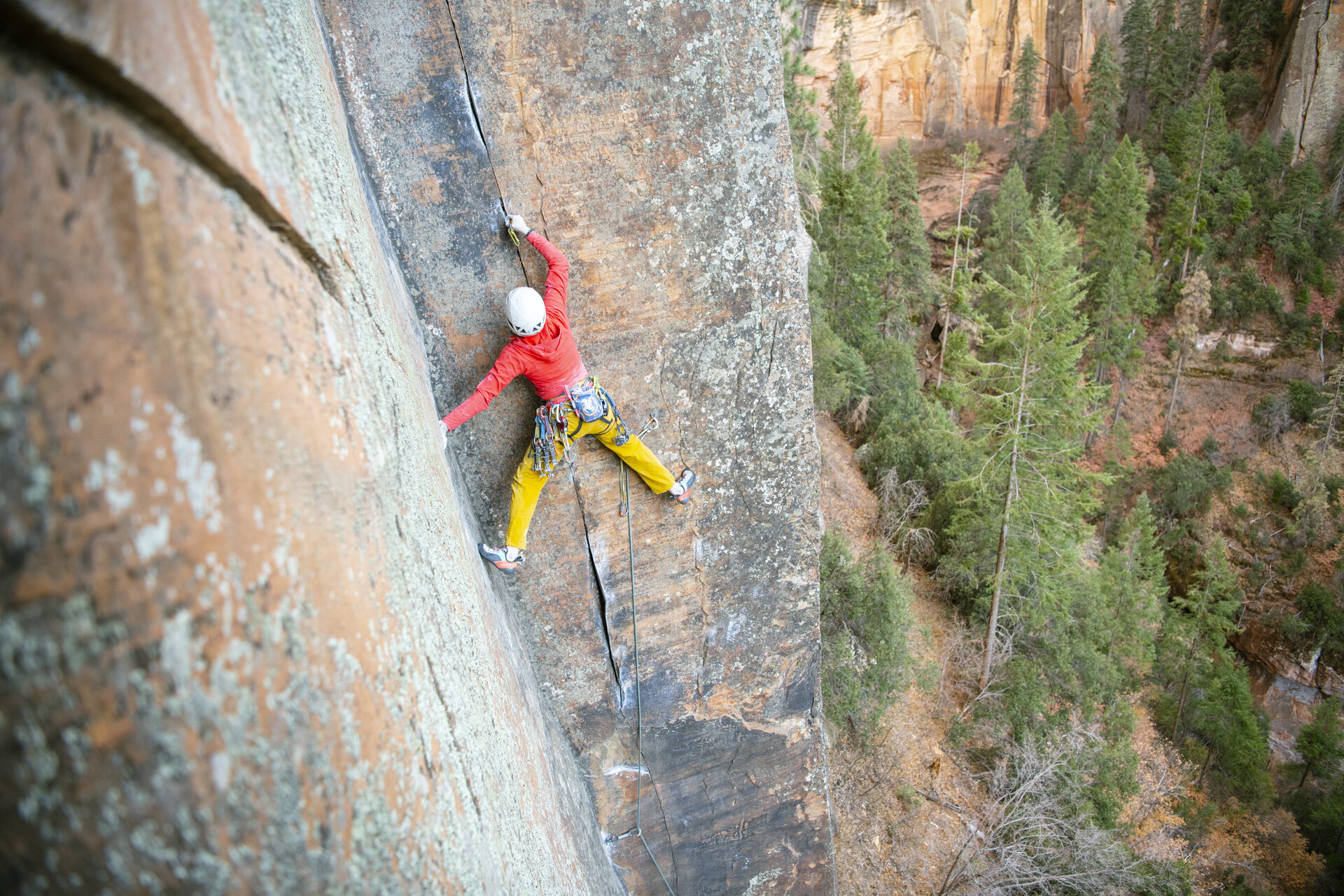


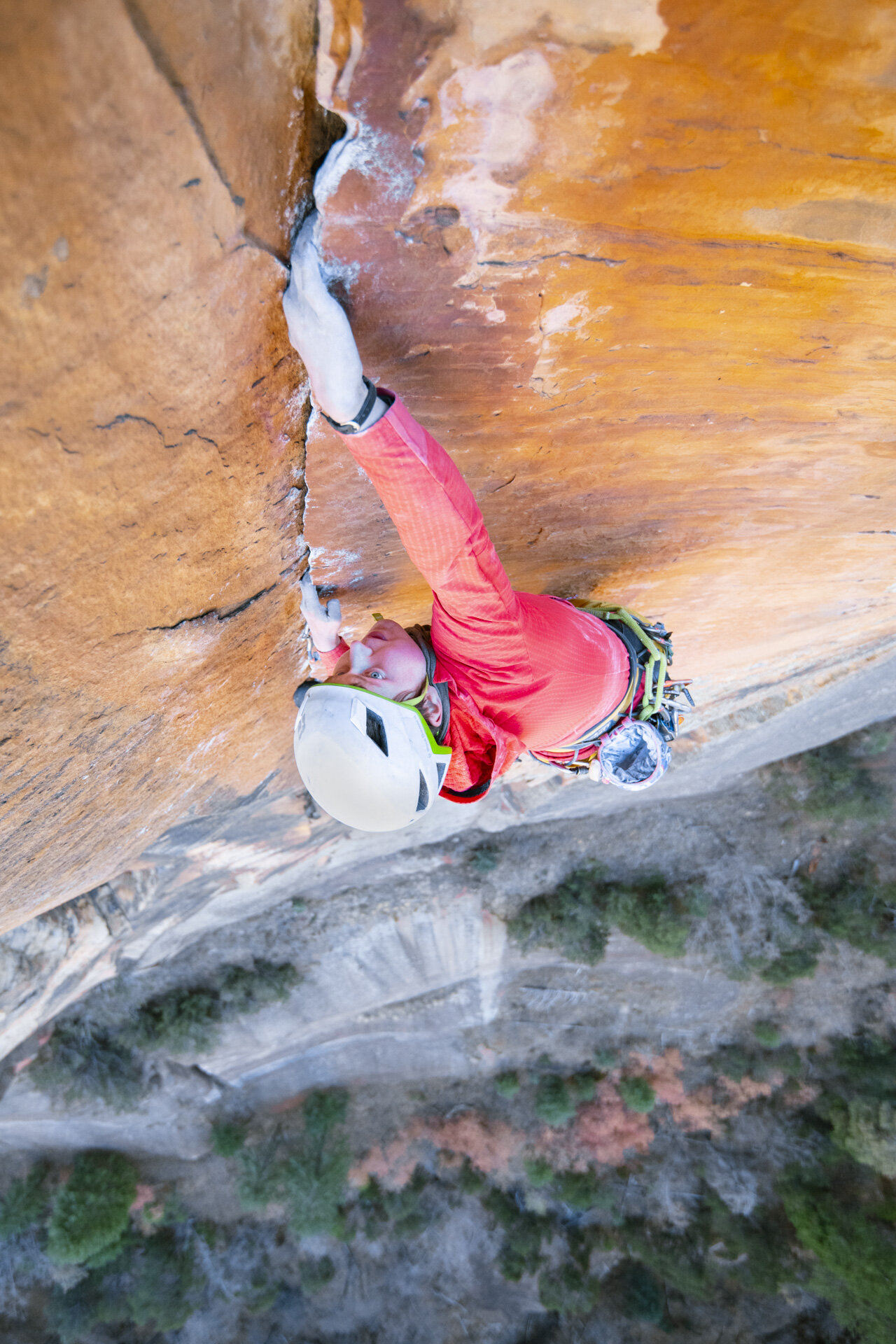


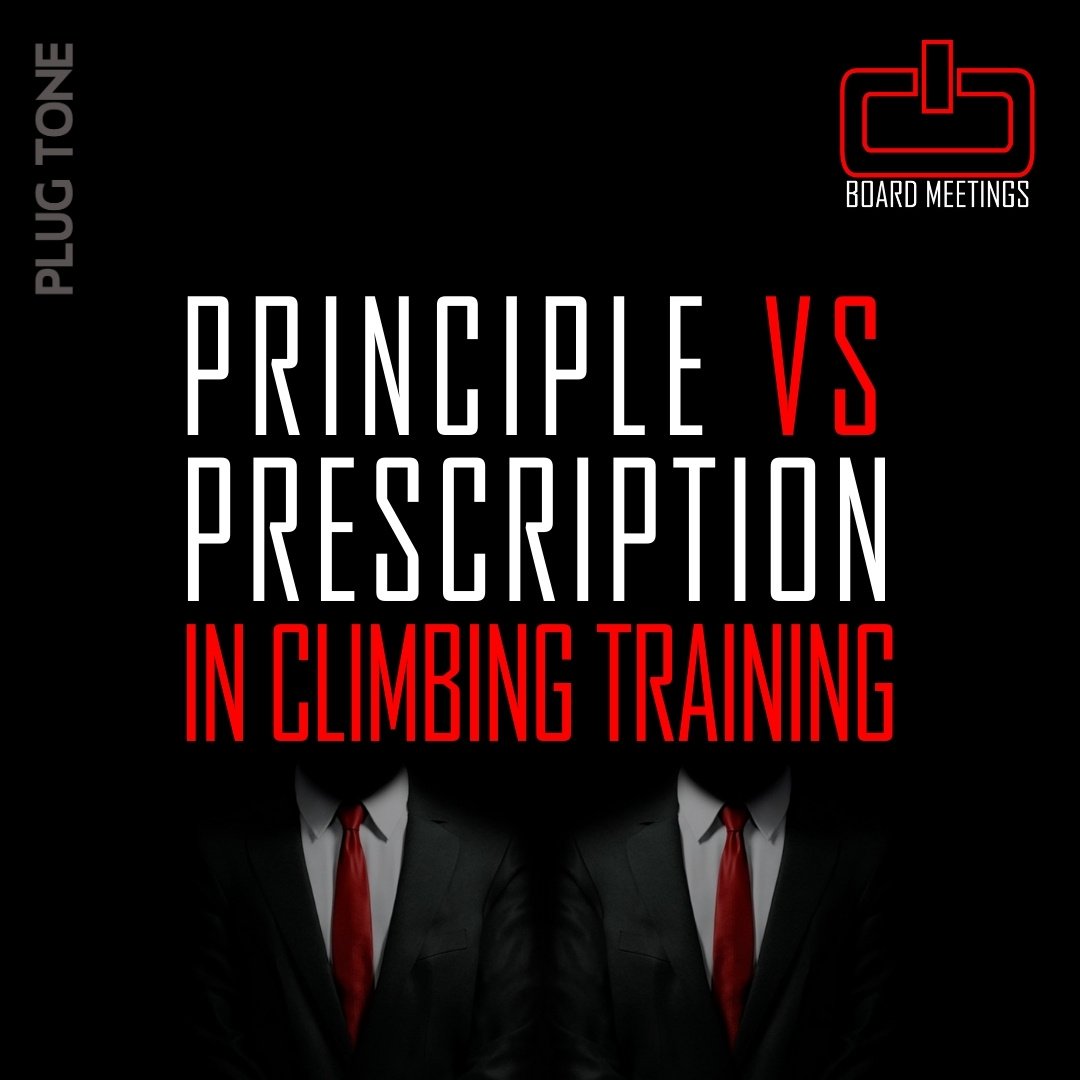





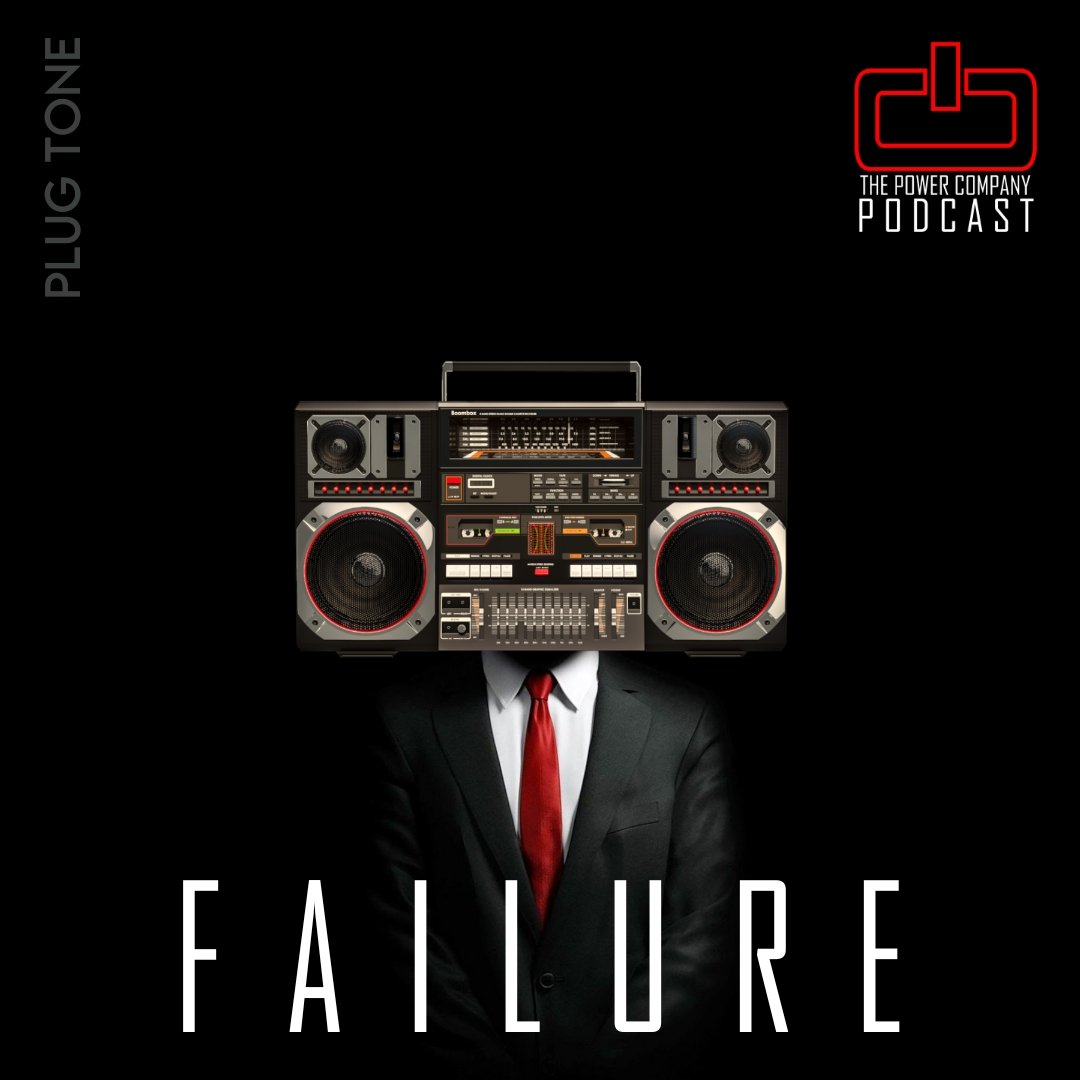

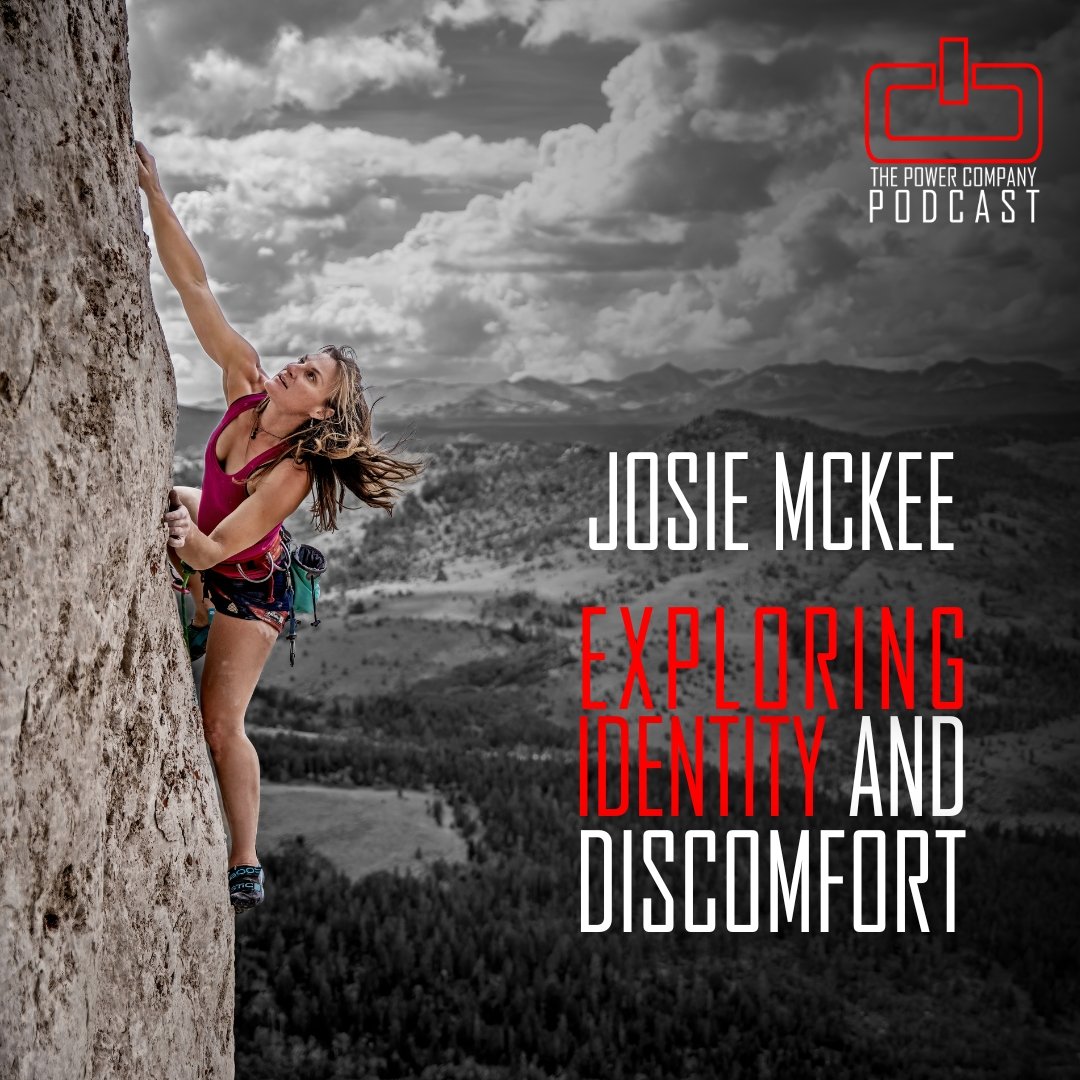




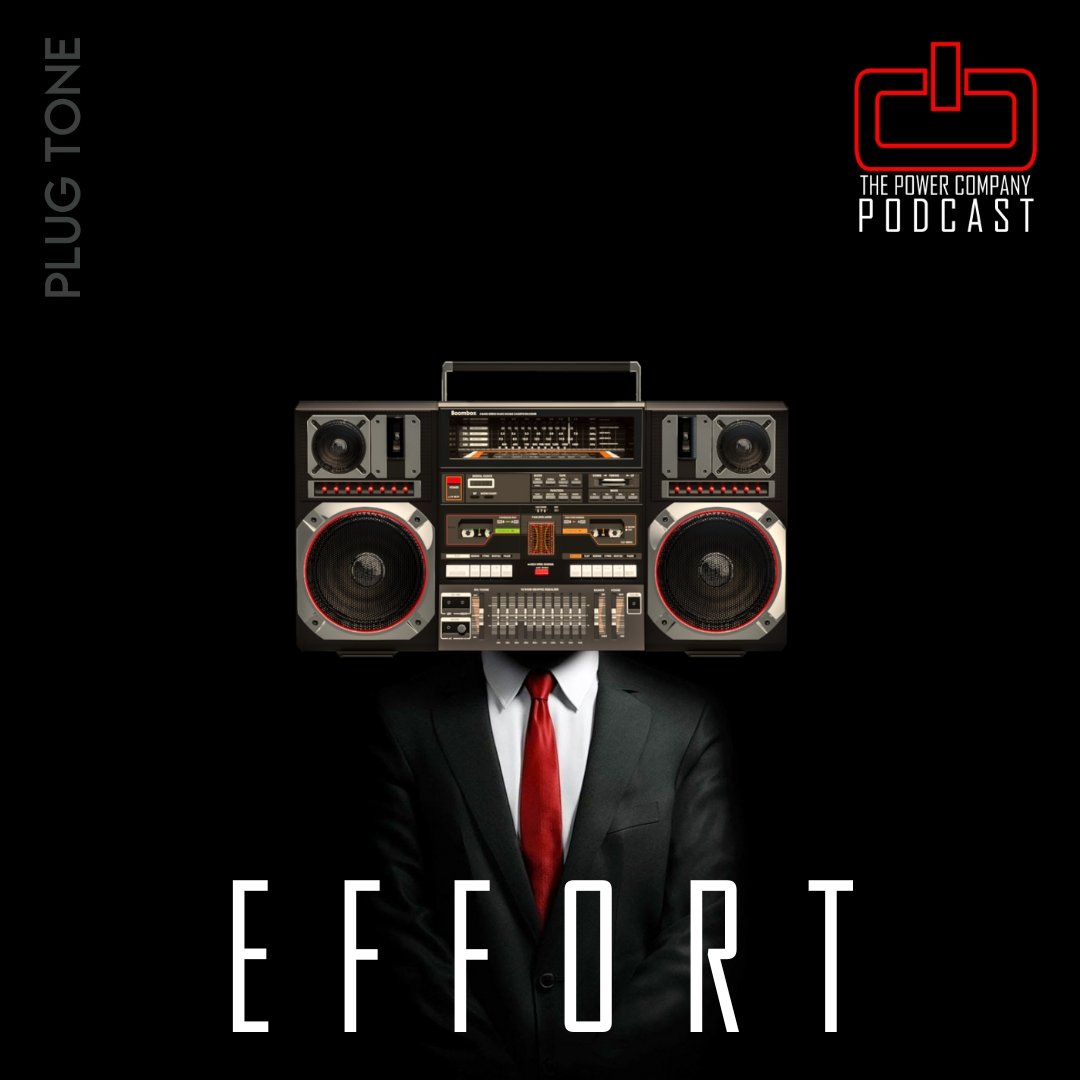


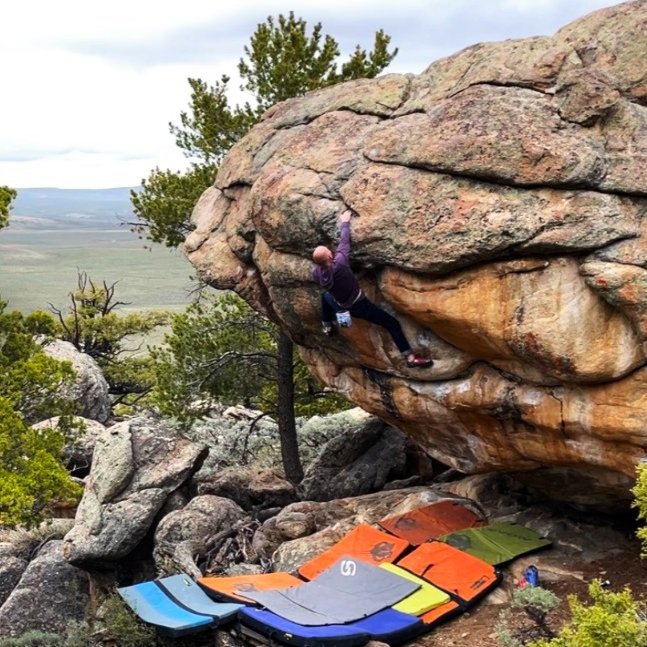

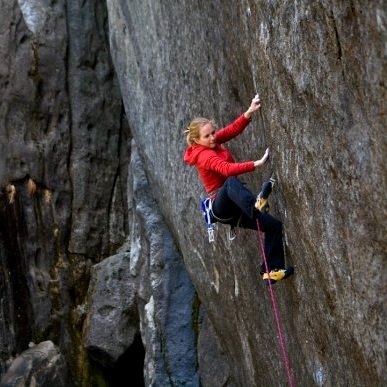
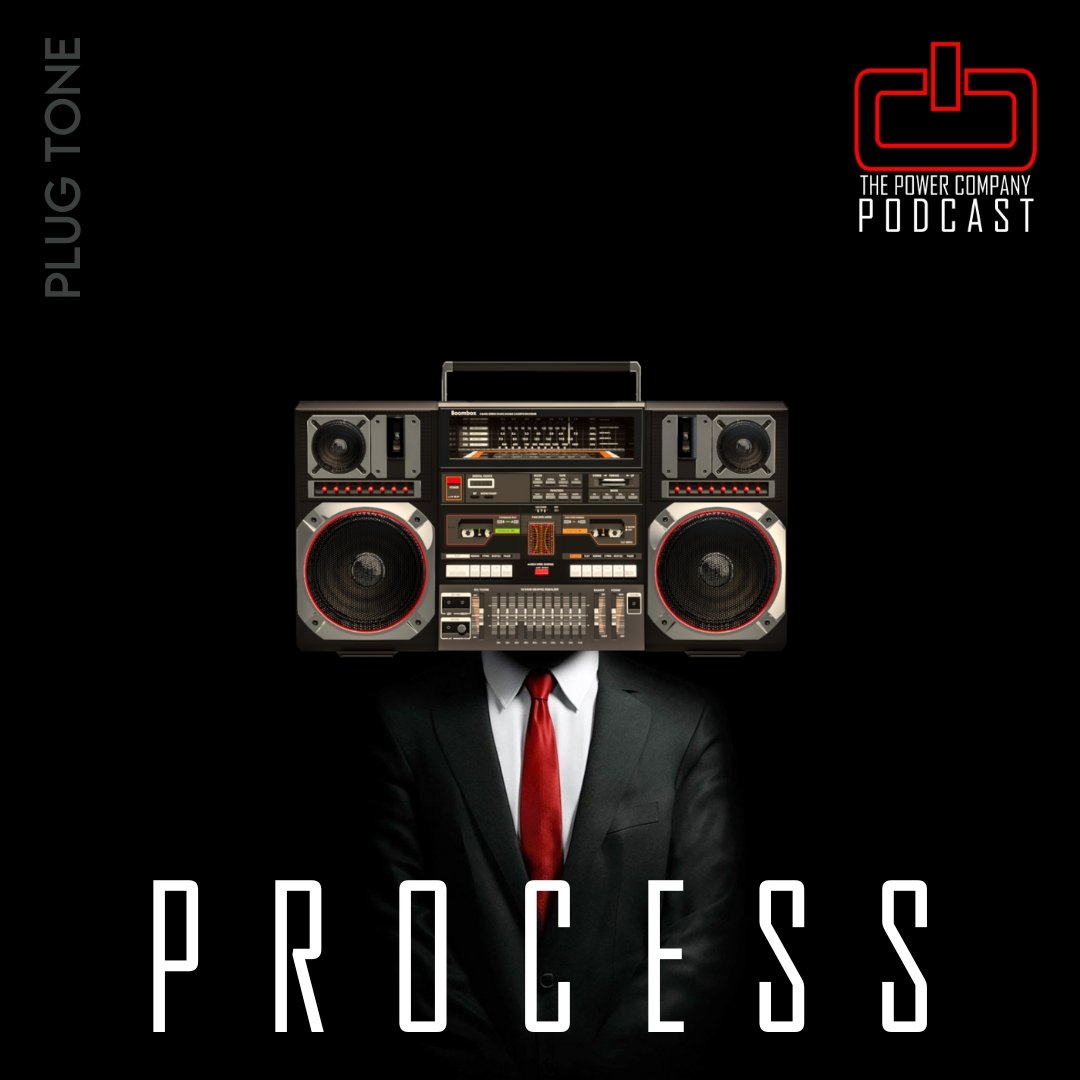



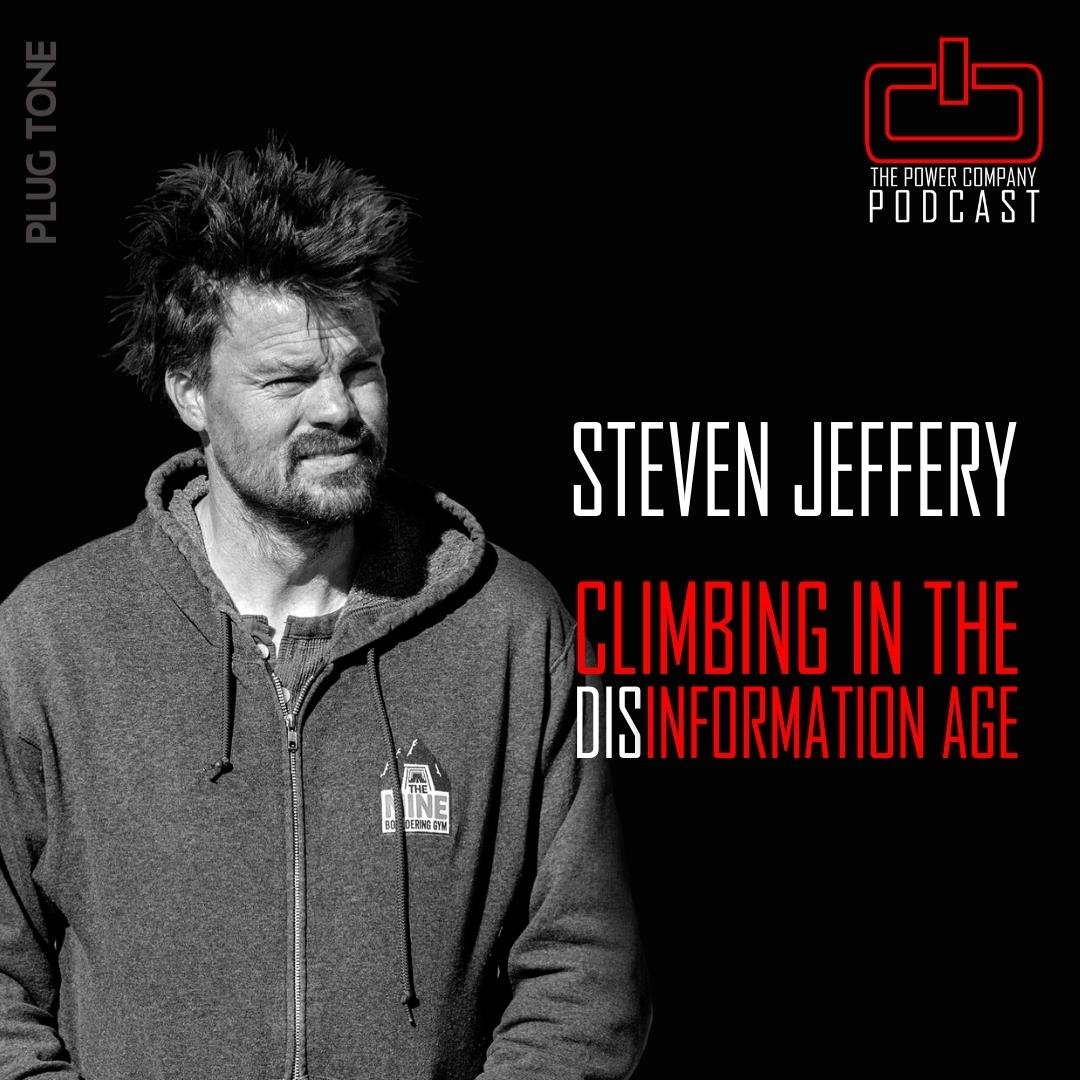




We are rarely in a position to take advantage of what we're physically capable of if we can’t shift our mindsets.